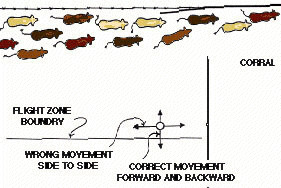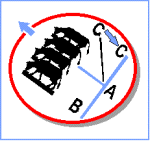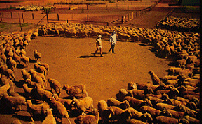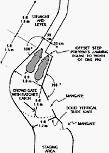| Home
|
| Sustainable Farming Connection |
| Where farmers find and share information. |
|
Low-Stress Livestock Handling
Herding methods and facilities that put less stress on you and your stock. |
 Diagram ©Temple Grandin |
If you raise any kind of livestock -- cattle, hogs, sheep, horses, buffalo or even wilder animals -- this is one of the most valuable Internet resources you'll find. Temple Grandin is perhaps the world's foremost authority on livestock facilities and handling methods designed to reduce animal stress. (Nearly half of the cattle in North American pass through systems that she designed.) This comprehensive site will help farmers and ranchers better understand livestock behavior and apply that knowledge to herding, working and facilities-design. Some features include:
Ordering information for Grandin's books are also available, including her widely acclaimed Thinking In Pictures, which describes her experiences with autism and reviews the latest research. |
 This section of the University of California's Sustainable Ranching Research and Education Project site provides a good introduction to Bud William's stockmanship techniques. The introductory pages give you a taste of Bud's methods, which start with a change in attitude from "I'm going to make that animal do what I want," to "I'm going to let that animal do what I want." These pages also provide some good anecdotes and make a strong connection between stress, productivity and your bottomline. If you don't need convincing, skip right to Belief & The Will To Do It, Version 2.0. Here you'll finding a nicely illustrated primer diagramming William's basics of how to use the animals' pressure zones to get them to start, stop, and essentially go where you want them to go. If that whets your appetite for more detailed info, Williams offers a five-hour video of his presentation at the Strockman Grass Farmer Conference held in 1990. (Cost: $100.) He also puts on livestock handling schools. For more information contact Bud at EuWillia@bordercity.com or write: Williams Stockmanship School, P.O. Box 2220, Lloydminster, Alberta, Canada T9V 1R6. (403) 875-9256. |
| Top of Page |
| Home
|
©1997 Committee for Sustainable Farm Publishing
Please read about our usage permission policy and disclaimer.
Send comments, suggestions and questions to the site author:
Craig Cramer cdcramer@clarityconnect.com
Coded using HoTMetaL Pro 3.0. Best viewed in Netscape 3.0 or later.
Please see our credits page for more information.
http://sunsite.unc.edu/farming-connection/grazing/features/lowstress.htm

